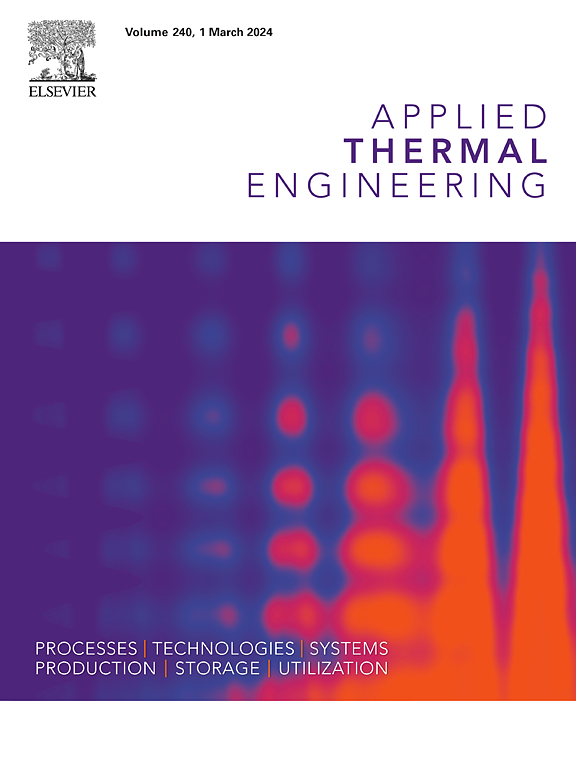Numerical analysis on the thermal behavior and optimization of a phase change cold energy storage device with thermoelectric coolers as a cold source
IF 6.9
2区 工程技术
Q2 ENERGY & FUELS
引用次数: 0
Abstract
Combining the advantages of phase change cold energy storage devices (PCCESDs) and thermoelectric coolers (TECs) is an effective method to efficiently utilize clean energy and reduce the mismatch between energy supply and demand. However, research on PCCESD using TEC as the cooling source is limited. In this paper, a novel PCCESD based on flat miniature heat pipe arrays utilizing TEC as the cooling source is numerically studied and optimized. The study examines the influence of fin structure and phase change temperature of the phase change materials (PCMs) on the device’s performance. Additionally, an orthogonal experiment method is employed to determine the optimal fin structure. Results show that increasing fin height and thickness, along with reducing fin spacing, significantly improves the cooling performance of the TEC and solidification rate of the PCM. Based on the results of orthogonal experiments, the optimal combination for the device’s fin structure includes a fin thickness of 0.1 mm, a height of 30 mm, and a spacing of 2 mm. Compared with the pre-optimization period, the COP of the TEC and solidification velocity of the PCM increase by 10 % and 1.8 %, respectively, but metal consumption only increases by 4.23 × 10−4 m3. Nonanoic acid with a phase change temperature of 12 °C is also identified as a suitable choice for the device. Under these conditions, the cooling power and COP of the TEC can further improve to 28.43 W and 0.385, representing increases of 60.9 % and 65.9 %, respectively.
以热电冷却器为冷源的相变蓄冷装置的热性能数值分析及优化
结合相变蓄冷装置(PCCESDs)和热电冷却器(TECs)的优势,是高效利用清洁能源、减少能源供需不匹配的有效方法。然而,以TEC作为冷却源的PCCESD研究有限。本文对一种基于平板微型热管阵列、采用TEC作为冷却源的新型PCCESD进行了数值研究和优化。研究了相变材料的翅片结构和相变温度对器件性能的影响。此外,采用正交试验法确定了最佳翅片结构。结果表明,增加翅片高度和厚度,减小翅片间距,可以显著提高TEC的冷却性能和PCM的凝固速度。根据正交实验结果,该装置翅片结构的最佳组合为:翅片厚度0.1 mm,高度30 mm,间距2 mm。与优化前相比,TEC的COP和PCM的凝固速度分别提高了10%和1.8%,但金属消耗量仅增加了4.23 × 10−4 m3。相变温度为12°C的壬酸也被确定为该装置的合适选择。在此条件下,TEC的冷却功率和COP分别提高到28.43 W和0.385,分别提高了60.9%和65.9%。
本文章由计算机程序翻译,如有差异,请以英文原文为准。
求助全文
约1分钟内获得全文
求助全文
来源期刊

Applied Thermal Engineering
工程技术-工程:机械
CiteScore
11.30
自引率
15.60%
发文量
1474
审稿时长
57 days
期刊介绍:
Applied Thermal Engineering disseminates novel research related to the design, development and demonstration of components, devices, equipment, technologies and systems involving thermal processes for the production, storage, utilization and conservation of energy, with a focus on engineering application.
The journal publishes high-quality and high-impact Original Research Articles, Review Articles, Short Communications and Letters to the Editor on cutting-edge innovations in research, and recent advances or issues of interest to the thermal engineering community.
 求助内容:
求助内容: 应助结果提醒方式:
应助结果提醒方式:


